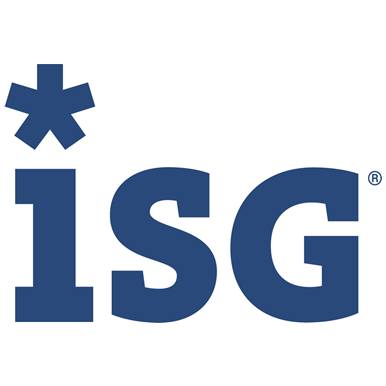
Research News and Market Data on III
3/27/2025
Breakthroughs breathe new life into legacy systems as agencies look for platforms to safely run AI models with sensitive data, ISG Provider Lens™ report says
STAMFORD, Conn.–(BUSINESS WIRE)– State and local governments in the U.S. are reevaluating mainframes as strategic assets and revisiting choices between reengineering and cloud migration, according to a new research report published today by Information Services Group (ISG) (Nasdaq: III ), a global AI-centered technology research and advisory firm.
The 2025 ISG Provider Lens™ Mainframe — Services and Solutions report for the U.S. public sector finds that AI is beginning to make mainframes easier and less expensive to maintain. Agencies are also discovering that mainframes may be uniquely suited to running AI workloads while protecting mission-critical data. Advances in AI created a wave of public-sector interest in mainframes in 2024 that is expected to continue into 2025.
“AI offers a wealth of new options to help the public sector unleash the potential of mainframe systems,” said Nathan Frey, ISG partner and lead, U.S. Public Sector. “When agencies weigh those possibilities against the risks of moving data and applications that have run on mainframes for decades, they often reconsider their roadmaps.”
State, local and educational (SLED) agencies in the U.S. are now considering which applications to keep on mainframes, how to optimize those applications and how to efficiently access mainframe data for use with AI models, the report says. AI, including generative AI, can streamline software development, testing and documentation, making it easier to either refactor or maintain mainframe applications. AI code assistants and chatbots can reduce the impact of the mainframe skills shortage by helping newer developers get up to speed.
More agencies are exploring the potential of AI and gaining a new appreciation for mainframes’ formidable processing and data management capabilities. The Trump administration’s avowed goal of reducing the size and influence of the federal government is expected to increase interest in using AI for automation. State and local governments are considering the same as they face tight budgets and the possibility of taking over some federal functions.
Policies on offshoring state and local government data and computing are also changing, the report says. New hybrid cloud architectures make it easier to use resources outside the U.S. for cost savings while complying with regulations. DevOps methodologies offer new ways to segregate highly sensitive information, which needs to remain on premises or in the U.S., from less sensitive data that can safely be stored offshore.
Rising U.S. public-sector demand for mainframe services has attracted more providers to this market. However, as agencies increase their reliance on providers, they are gravitating toward those that have built up experience in the sector and that understand its unique mainframe requirements.
“State and local agencies in the U.S. are finally rising to the challenge of modernizing age-old mainframe IT environments,” said Jan Erik Aase, partner and global leader, ISG Provider Lens Research. “Leading service providers have the AI tools and specialized skills to help them make the leap.”
The report also explores other mainframe trends in the U.S. public sector, including rising IT collaboration among SLED agencies around the country and the impact of new training initiatives by providers.
For more insights into the mainframe challenges faced by the U.S. public sector, including software licensing issues and national political uncertainty, plus ISG’s advice for addressing them, see the ISG Provider Lens™ Focal Points briefing here.
The 2025 ISG Provider Lens™ Mainframe — Services and Solutions report for the U.S. public sector evaluates the capabilities of 29 providers across four quadrants: Mainframe Optimization Services, Application Modernization Services, Mainframe as a Service and Mainframe Operations.
The report names Wipro as a Leader in all four quadrants. It names DXC Technology, Ensono, Kyndryl and TCS as Leaders in three quadrants each. Accenture, FNTS and Infosys are named as Leaders in two quadrants each. Avanade, Capgemini, HCLTech, NTT DATA and Tech Mahindra are named as Leaders in one quadrant each.
In addition, DXC Technology is named as a Rising Star — a company with a “promising portfolio” and “high future potential” by ISG’s definition — in one quadrant.
In the area of customer experience, UST is named the global ISG CX Star Performer for 2024 among mainframe service providers. UST earned the highest customer satisfaction scores in ISG’s Voice of the Customer survey, part of the ISG Star of Excellence™ program, the premier quality recognition for the technology and business services industry.
Customized versions of the report are available from FNTS and RecoveryPoint.
The 2025 ISG Provider Lens™ Mainframe — Services and Solutions report for the U.S. public sector is available to subscribers or for one-time purchase on this webpage.
About ISG Provider Lens™ Research
The ISG Provider Lens™ Quadrant research series is the only service provider evaluation of its kind to combine empirical, data-driven research and market analysis with the real-world experience and observations of ISG’s global advisory team. Enterprises will find a wealth of detailed data and market analysis to help guide their selection of appropriate sourcing partners, while ISG advisors use the reports to validate their own market knowledge and make recommendations to ISG’s enterprise clients. The research currently covers providers offering their services globally, across Europe, as well as in the U.S., Canada, Mexico, Brazil, the U.K., France, Benelux, Germany, Switzerland, the Nordics, Australia and Singapore/Malaysia, with additional markets to be added in the future. For more information about ISG Provider Lens research, please visit this webpage.
About ISG
ISG (Nasdaq: III ) is a global AI-centered technology research and advisory firm. A trusted partner to more than 900 clients, including 75 of the world’s top 100 enterprises, ISG is a long-time leader in technology and business services that is now at the forefront of leveraging AI to help organizations achieve operational excellence and faster growth. The firm, founded in 2006, is known for its proprietary market data, in-depth knowledge of provider ecosystems, and the expertise of its 1,600 professionals worldwide working together to help clients maximize the value of their technology investments.
Source: Information Services Group, Inc.View all news

